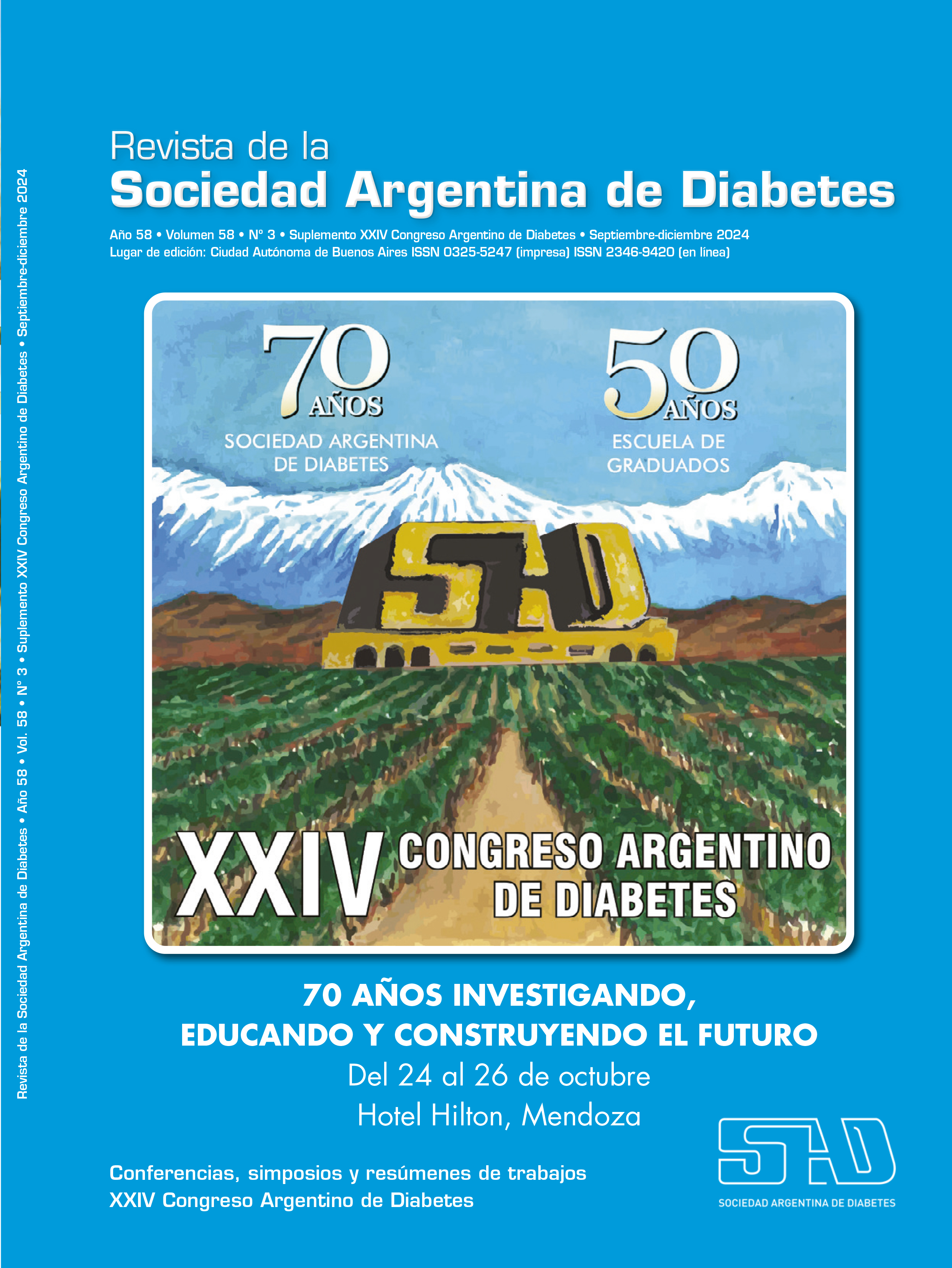Automated closed loop systems or not
Keywords:
diabetes, automated insulin delivery systemAbstract
Since the approval of the first automated insulin delivery system (AIDs) in 2016, as a treatment for people with type 1 Diabetes (PwT1D), the number of AIDs users and consortia has increased significantly, improving the designs and performance of its components (infuser, sensor and algorithm). Infusers that administer insulin through or without catheters (“patch pumps”) are smaller in size and have greater variations in operability, from mobile phones, from the infuser itself or through an administrator or multiple operable devices.
The challenges for algorithm developers are: 1) to control glycemic variations in the prandial environment, with pre-meal calculated boluses and automated prandial corrective boluses, or by announcing food but without pre-calculated boluses (semi- or fully automatic AIDs); 2) adjust insulin infusion during physical activity and in the event of acute changes in blood glucose due to physical or emotional stress.
The numerous randomized controlled trials (RCT) in PwT1D with AIDs conclude that they are effective in improving HbA1c levels, reducing times in range and reducing risks and times in hypoglycemia. They are also consistent in terms of psychosocial benefits, especially attenuating individual and family fear of hypoglycemia. The real-world studies with AIDs confirm the metabolic and quality of life benefits of RCTs. The above explains the increasing use of AIDs in all ages of PwT1D, with their preference being greater in older adults and children.
In the first consensus on AIDs recommendations, it was suggested that failure of treatment with multiple doses of insulin to achieve metabolic objectives, high glycemic variability, problematic hypoglycemia, and nocturnal hyperglycemia (dawn phenomenon) in PwT1D would be the main indications for AIDs, among others.
There are some pending issues to be resolved with AIDs: achieving equitable accessibility to all socioeconomic strata, adapting the technology in PwT1D with different abilities (e.g. blindness), adapting algorithms in special situations (e.g. pregnancies or hospitalizations) and carrying out prospective RCTs and comparisons between different AIDs. We can conclude that AIDs constitute a paradigmatic change in the treatment of PwT1D, with a technological horizon without limits, aimed at achieving metabolic objectives, attenuating the burden of daily tasks and distress due to the disease, to finally increase their quality of life.
References
I. Jinggwen L, et al. Automated insulin delivery use among 12,065 T1D exchange registry participants. Diabetes 2022;71(Supp 1). doi:10.2337/db22-289-OR.
II. Consensus recommendations for the use of automated insulin delivery technologies in clinical practice. Endocrine Rev 2023;44:254-280. doi: 10.1210/endrev/bnac022.
III. Serné EH, et al. Cost-effectiveness of hybrid closed loop insulin pumps vs. multiple daily injections plus intermittently scanned glucose monitoring in people with type 1 diabetes in The Netherlands. Advances in Therapy 2022;39(4):1844-856. doi: 10.1007/s12325-022-02058-9.
IV. Diabetes Technology: Standards of Care in Diabetes 2024 Diabetes Care 2024;47(Suppl. 1):S126–S144. doi: 10.2337/dc24-S007.
Downloads
Published
Issue
Section
License
Copyright (c) 2024 on behalf of the authors. Reproduction rights: Argentine Society of Diabetes

This work is licensed under a Creative Commons Attribution-NonCommercial-NoDerivatives 4.0 International License.
Dirección Nacional de Derecho de Autor, Exp. N° 5.333.129. Instituto Nacional de la Propiedad Industrial, Marca «Revista de la Sociedad Argentina de Diabetes - Asociación Civil» N° de concesión 2.605.405 y N° de disposición 1.404/13.
La Revista de la SAD está licenciada bajo Licencia Creative Commons Atribución – No Comercial – Sin Obra Derivada 4.0 Internacional.
Por otra parte, la Revista SAD permite que los autores mantengan los derechos de autor sin restricciones.




























